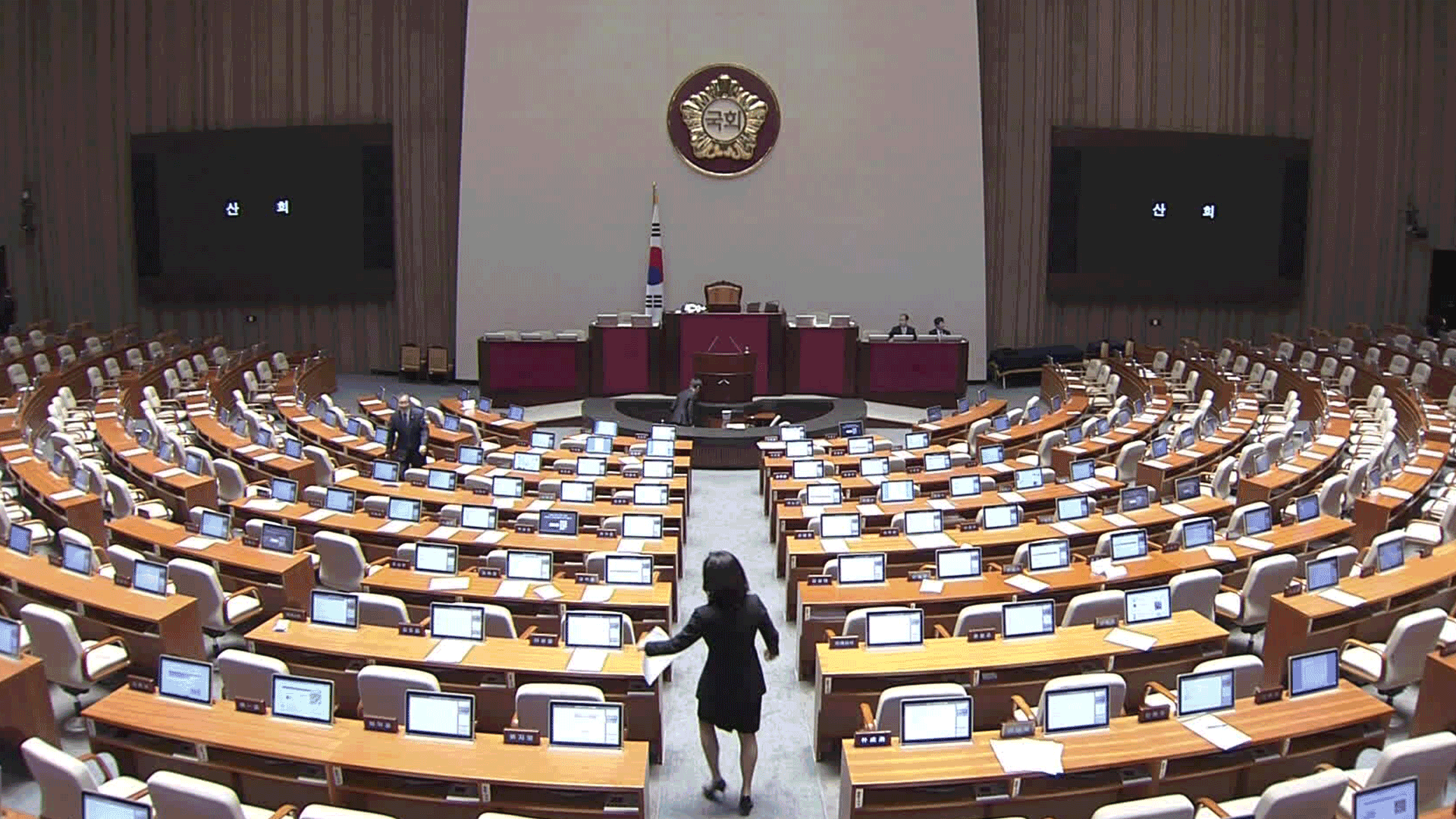Earthquake in Pohang
입력 2017.11.16 (14:54)
수정 2017.11.16 (16:42)
읽어주기 기능은 크롬기반의
브라우저에서만 사용하실 수 있습니다.
[Anchor Lead]
A 5.4-magnitude earthquake struck the city of Pohang in Korea's southeastern region. It was followed by dozens of aftershocks. The quake could be felt by people across the entire country, and the aftershocks keep coming.
[Pkg]
The wall of a university building all of a sudden collapses. The building becomes shrouded in a thick cloud of dust. Students rush out of the building screaming. A 5.4-magnitude earthquake struck nine kilometers north of the city of Pohang in Gyeongsangbuk-do Province at around 2:29 p.m. Wednesday. It's the second most powerful earthquake in Korea to date after the 5.8-magnitude quake that hit the city of Gyeongju in September last year. The epicenter of the Pohang earthquake was located about nine kilometers deep, closer to the earth's surface than the epicenter of the Gyeongju quake, which was located 15 kilometers deep. This is why the tremors felt more powerful than during the Gyeongju disaster.
[Soundbite] Lee Mi-seon(Korea Meteorological Administration) : "A waveform analysis shows that this earthquake had stronger S-waves than P-waves, which indicates that it was a natural disaster."
Seven minutes before the earthquake struck, two tremors of magnitude 2 were detected. Dozens of aftershocks have occurred so far. They continued throughout the day, and are expected to last for months. Meteorologists believe that the Pohang earthquake occurred in a similar fault as the Gyeongju earthquake. That's why the authorities were able to issue an early earthquake alert 19 seconds after the quake struck, eight seconds earlier than during the Gyeongju earthquake last year.
A 5.4-magnitude earthquake struck the city of Pohang in Korea's southeastern region. It was followed by dozens of aftershocks. The quake could be felt by people across the entire country, and the aftershocks keep coming.
[Pkg]
The wall of a university building all of a sudden collapses. The building becomes shrouded in a thick cloud of dust. Students rush out of the building screaming. A 5.4-magnitude earthquake struck nine kilometers north of the city of Pohang in Gyeongsangbuk-do Province at around 2:29 p.m. Wednesday. It's the second most powerful earthquake in Korea to date after the 5.8-magnitude quake that hit the city of Gyeongju in September last year. The epicenter of the Pohang earthquake was located about nine kilometers deep, closer to the earth's surface than the epicenter of the Gyeongju quake, which was located 15 kilometers deep. This is why the tremors felt more powerful than during the Gyeongju disaster.
[Soundbite] Lee Mi-seon(Korea Meteorological Administration) : "A waveform analysis shows that this earthquake had stronger S-waves than P-waves, which indicates that it was a natural disaster."
Seven minutes before the earthquake struck, two tremors of magnitude 2 were detected. Dozens of aftershocks have occurred so far. They continued throughout the day, and are expected to last for months. Meteorologists believe that the Pohang earthquake occurred in a similar fault as the Gyeongju earthquake. That's why the authorities were able to issue an early earthquake alert 19 seconds after the quake struck, eight seconds earlier than during the Gyeongju earthquake last year.
■ 제보하기
▷ 카카오톡 : 'KBS제보' 검색, 채널 추가
▷ 전화 : 02-781-1234, 4444
▷ 이메일 : kbs1234@kbs.co.kr
▷ 유튜브, 네이버, 카카오에서도 KBS뉴스를 구독해주세요!
- Earthquake in Pohang
-
- 입력 2017-11-16 15:17:31
- 수정2017-11-16 16:42:59

[Anchor Lead]
A 5.4-magnitude earthquake struck the city of Pohang in Korea's southeastern region. It was followed by dozens of aftershocks. The quake could be felt by people across the entire country, and the aftershocks keep coming.
[Pkg]
The wall of a university building all of a sudden collapses. The building becomes shrouded in a thick cloud of dust. Students rush out of the building screaming. A 5.4-magnitude earthquake struck nine kilometers north of the city of Pohang in Gyeongsangbuk-do Province at around 2:29 p.m. Wednesday. It's the second most powerful earthquake in Korea to date after the 5.8-magnitude quake that hit the city of Gyeongju in September last year. The epicenter of the Pohang earthquake was located about nine kilometers deep, closer to the earth's surface than the epicenter of the Gyeongju quake, which was located 15 kilometers deep. This is why the tremors felt more powerful than during the Gyeongju disaster.
[Soundbite] Lee Mi-seon(Korea Meteorological Administration) : "A waveform analysis shows that this earthquake had stronger S-waves than P-waves, which indicates that it was a natural disaster."
Seven minutes before the earthquake struck, two tremors of magnitude 2 were detected. Dozens of aftershocks have occurred so far. They continued throughout the day, and are expected to last for months. Meteorologists believe that the Pohang earthquake occurred in a similar fault as the Gyeongju earthquake. That's why the authorities were able to issue an early earthquake alert 19 seconds after the quake struck, eight seconds earlier than during the Gyeongju earthquake last year.
A 5.4-magnitude earthquake struck the city of Pohang in Korea's southeastern region. It was followed by dozens of aftershocks. The quake could be felt by people across the entire country, and the aftershocks keep coming.
[Pkg]
The wall of a university building all of a sudden collapses. The building becomes shrouded in a thick cloud of dust. Students rush out of the building screaming. A 5.4-magnitude earthquake struck nine kilometers north of the city of Pohang in Gyeongsangbuk-do Province at around 2:29 p.m. Wednesday. It's the second most powerful earthquake in Korea to date after the 5.8-magnitude quake that hit the city of Gyeongju in September last year. The epicenter of the Pohang earthquake was located about nine kilometers deep, closer to the earth's surface than the epicenter of the Gyeongju quake, which was located 15 kilometers deep. This is why the tremors felt more powerful than during the Gyeongju disaster.
[Soundbite] Lee Mi-seon(Korea Meteorological Administration) : "A waveform analysis shows that this earthquake had stronger S-waves than P-waves, which indicates that it was a natural disaster."
Seven minutes before the earthquake struck, two tremors of magnitude 2 were detected. Dozens of aftershocks have occurred so far. They continued throughout the day, and are expected to last for months. Meteorologists believe that the Pohang earthquake occurred in a similar fault as the Gyeongju earthquake. That's why the authorities were able to issue an early earthquake alert 19 seconds after the quake struck, eight seconds earlier than during the Gyeongju earthquake last year.
이 기사가 좋으셨다면
-
좋아요
0
-
응원해요
0
-
후속 원해요
0










![[headline]](https://news.kbs.co.kr/data/news/2017/11/16/3571987_10.jpg)






이 기사에 대한 의견을 남겨주세요.